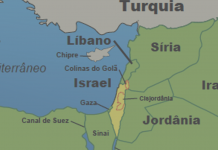
SOUTHERN ISRAEL UNDER SIEGE
The Iron Dome got high marks for its performance this week, but some question whether it is worth its sky-high costs.
By Yehudah Marks

While the residents of southern Israel are benefiting from the Iron Dome’s success at intercepting Palestinian missiles, security officials are locked in a bitter debate over whether the antimissile system is worth the price.
“If not for the Iron Dome, there wouldn’t be a single resident left here,” one Ashdodresident tells us. “The fact that we don’t hear ambulances after the sirens, and that no damage is done, makes us much calmer.”
But some security experts are not at all happy with the new system.
How Does It Work?
The Iron Dome mobile air defense system was developed by Rafael Advanced Defense Systems to intercept short-range rockets and artillery shells.
The system, which was completed and officially launched exactly a year ago, is designed to intercept rockets fired from distances of 2.5 to 44 miles (four to 70 km) away, in all weather conditions.
Iron Dome is made up of three major components: a radar, a computerized calculation system, and the missile firing unit.
When the terrorists fire a rocket, the system’s radar detects the rocket’s launch and tracks its route. The radar conveys the data to the computer system, which calculates the expected hit point according to the reported data, and uses this information to determine whether the target constitutes a threat to a designated area.
Only in this case is an interceptor missile fired to detonate the rocket before it reaches the expected impact area. In addition, the use of this advanced technology helps the Home Front know exactly where the missile will fall, and the sirens are therefore only sounded in that area.
This explains, for example, why Ashdod residents complained that sometimes the siren was muted, and they didn’t know if they needed to go to the shelters. What they heard were the sirens in nearby Yavne, where the rocket was directed, and there was indeed no need for them to enter the shelters.
Iron Dome went from the drawing board to combat readiness in less than four years, which military experts say is a remarkably short time for a weapons system designed from scratch. Its manufacturers were overjoyed with the final product.
“There was no system like this, anywhere in the world, in terms of capabilities, speed and accuracy,” said Eyal Ron, a manager at mPrest, the Israeli software company that designed Iron Dome’s computerized control center.
The Cost Factor
The main opposition to the Iron Dome is due to its astronomical cost: Each system costs NIS 200 million, and Defense Ministry director general Maj. Gen. (res.) Udi Shani said last year that Israel plans to invest nearly $1 billion in the coming years for the development and production of Iron Dome batteries.
And then there are the running costs: Every missile costs over NIS 200,000, and since two missiles are sent to intercept every Hamas rocket, the price more than doubles to around NIS 500,000.
“This is a huge amount to pay for every joke the Arabs send,” says Hamodia’s defense correspondent Yisrael Katsover. “It costs them a few hundred shekels to send a rocket, and we have to pay so much more to knock it down. This morning [Monday], for example, the Palestinians fired a barrage of six Kassems, which Israel knocked down at a cost of NIS 3 million – in just one morning.”
Skeptics argue that if Israel had a limitless budget, Iron Dome would be an ideal way to protect its population. But with its limited coffers, Iron Dome is an expense that Israel simply can’t allow itself, however necessary it may be.
Reuven Pedatzur, a military analyst, has been very critical of Iron Dome’s high costs. “Launching very large numbers of Kassems could essentially attackIsrael’s financial means,” he argued.
But Rafael responds that the cost issue is exaggerated, since Iron Dome intercepts only rockets that constitute a threat, and that the lives saved and the strategic impact are worth the cost.
Katsover, on a positive note, offers an insight into why Iron Dome might be successful even though each of its rockets costs infinitely more than the Kassems. “When the terrorists see that they aren’t getting anywhere by firing rockets, and all of them are intercepted, they will get fed up and stop,” he explains.
Financial experts see great potential in selling the system to foreign countries – thereby making it more affordable to Israel – but Katsover says exporting the Iron Dome is out of the question.
“This works with a computerized system, and if the disk falls into the wrong hands, the Arabs will know how it works and will be able to develop their rockets accordingly, and then the Iron Dome will be totally useless.”
Wouldn’t Laser Be Cheaper?
Five years ago, Israel’s security experts mulled two options: building the Iron Dome or developing a laser system. Initially, the laser defense system was considered the better option, but the success of the Iron Dome has proven otherwise.
However, the laser system would have been much cheaper to use than the Iron Dome – costing only around $1,000 for each beam discharge, while Iron Dome costs 50 times that amount – and security experts are still upset with then-Defense Minister Amir Peretz for deciding on the Iron Dome over the much cheaper laser system.
“The lower cost of the laser system is a plus,” agrees Katsover, “but a major drawback of the system is that it is not mobile. While the Iron Dome is on wheels and can be moved wherever needed, the laser system is housed in a building and cannot be moved.”
Despite having experience with rocket attacks and knowing exactly what to do when the sirens sound, Ashdod residents continue to experience panic and trauma.
By Yehudah Marks
You’d think that, by now, residents of Ashdod would be used to hearing sirens warning of incoming rockets, but there are some things you never get used to.
“When the first siren went off, we were in the middle of seudas Shabbos,” recalls B.R. “I tried to calmly lead the children to the staircase – we don’t have a ‘secure room’ in our apartment, so the Home Front Command’s instructions are that we proceed to the most secure part of the building, which is the shared stairwell – but my oldest child became hysterical, with the younger ones following in chorus.”
After calm was restored, the next siren went off – in the middle of the night, when everyone was asleep.
“Once again, the oldest started crying, and the other seven followed suit. And the same thing happened every time the siren went off throughout the night,” B.R. says.
A “secure room” is built with cement walls. If that is not available, an inside room with no windows or outside walls is recommended. Any building approved after the 1991 Gulf War must have such a room in each apartment, but older buildings need to designate areas that serve as “secure areas.”
The Iron Dome system located in Ashdod was baruch Hashem successful in intercepting the Hamas rockets fired from Gaza, resulting in practically no rockets falling in Ashdod. However, the Home Front Command warns civilians not to rely on the Iron Dome; indeed, as Ashdod residents witnessed, one rocket hit a sports stadium. The stadium is very close to the chareidi Abramsky neighborhood, and the explosion shattered many windows in buildings there.
So the sirens are still sounded, and the residents are still panicking.
“I was worried about my sister,” says one of the men interviewed for this article, since her husband had traveled Thursday night to America.
“I walked over to her apartment early Shabbos morning, and as expected she was awake, shaking in fear,” says N.K. “Only after I arrived did I realize what a good deed I did – five minutes later the siren once again went off, but having another person in the house made it much easier.”
But not all residents took the rocket barrages so hard. A.S., for example, didn’t even hear them.
“I was in Yerushalayim the same morning at my parent’s seudas Purim, and returned very tipsy,” he says. “After davening, we ate the seudas Shabbos, where I had a few more drinks. The next morning, when my wife told me about the sirens, I didn’t know what she was talking about – I didn’t hear a thing!”
There were others who, even if they heard the sirens, didn’t have the koach to get out of bed and dress the children.
“We have a secure room in our apartment, but since my husband wasn’t at home for Shabbos, I was staying with my parents, who don’t have a secure room,” says T.M. “The first time the siren went off, I took my twin babies to the stairwell, and 10 minutes later returned to the apartment. When the siren went off a second time, after we had gone to sleep, I woke up the twins and again took them out to the staircase.
“But how many times could I do this? When the next siren went off, I just turned over and went back to sleep.”
On Sunday and Monday, all the schools and educational institutions in the city were closed, but shops and workplaces were open. This unexpected vacation created a dilemma for working mothers, who had no one to look after their children.
“It wasn’t so bad for the kollel men, who learned at home instead of in kollel,” said one religious Ashdod taxi driver. “But I had to stay home to look after the children, while my wife went to the supermarket where she works. I lost a whole day’s work.”
Walking down the road in Tel Aviv, I noticed an Ashdod yungerman who had moved in with his in-laws. When I asked how he was coping, he replied, “However nice and comfortable my in-laws make it, I’m still in galus.”












